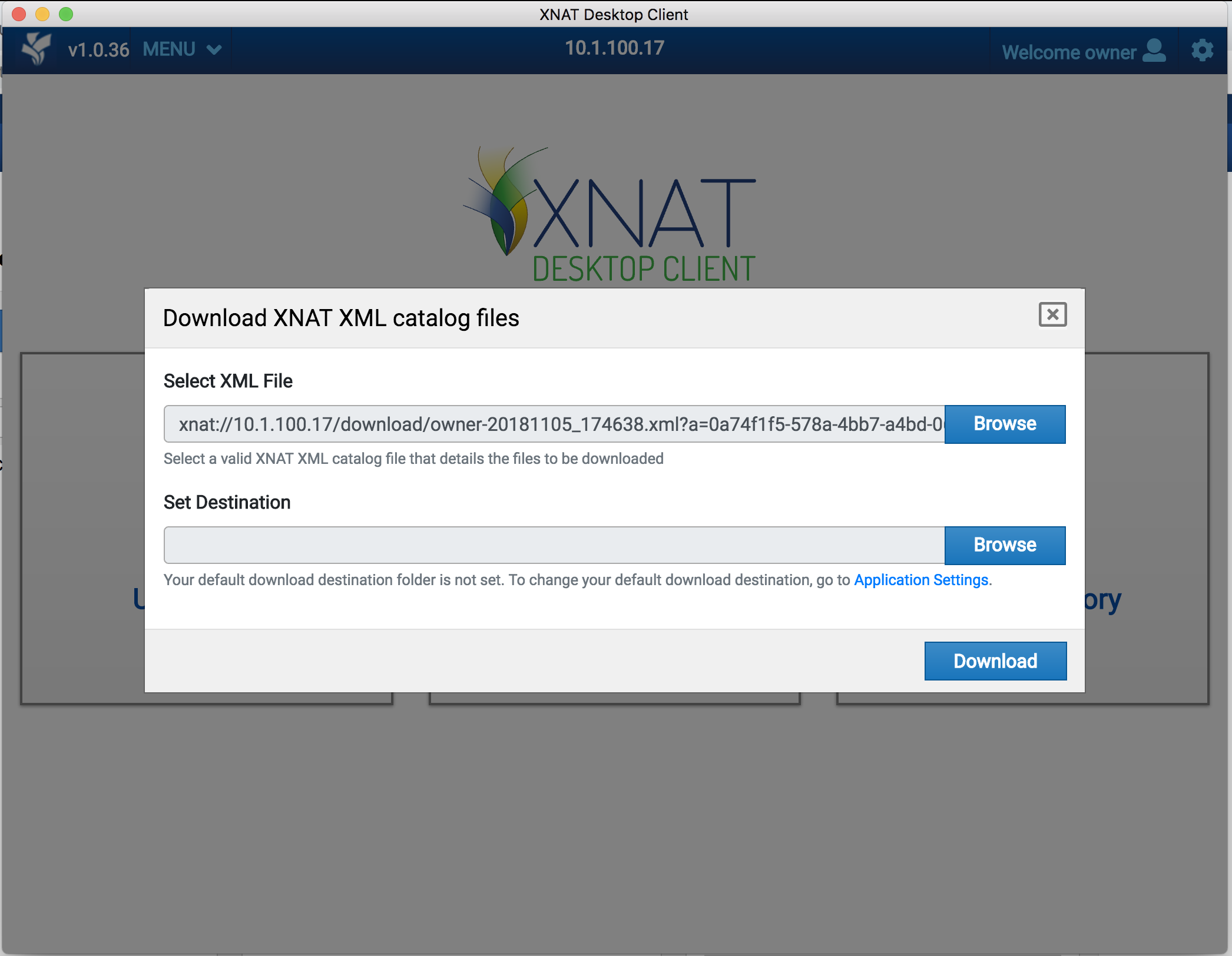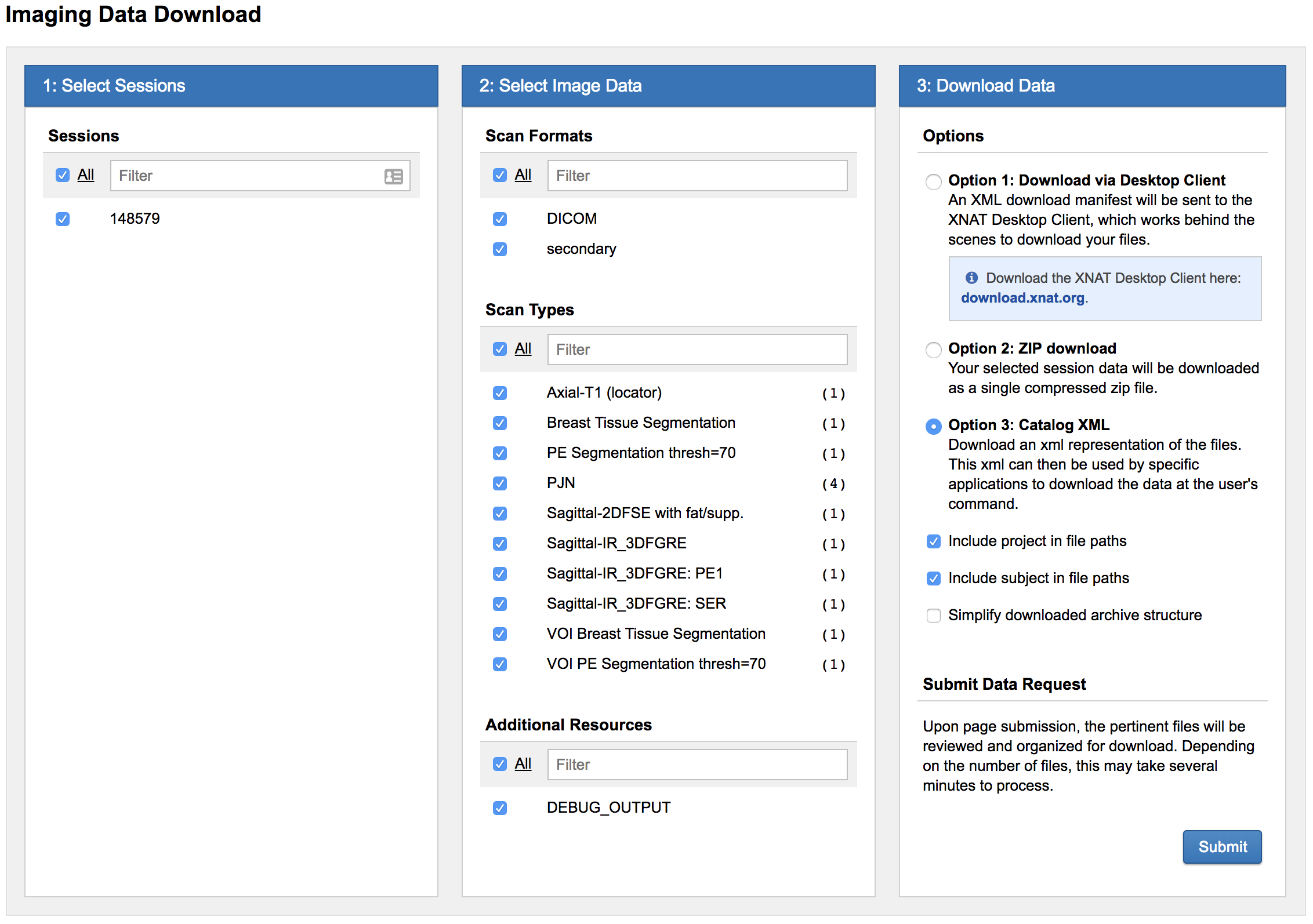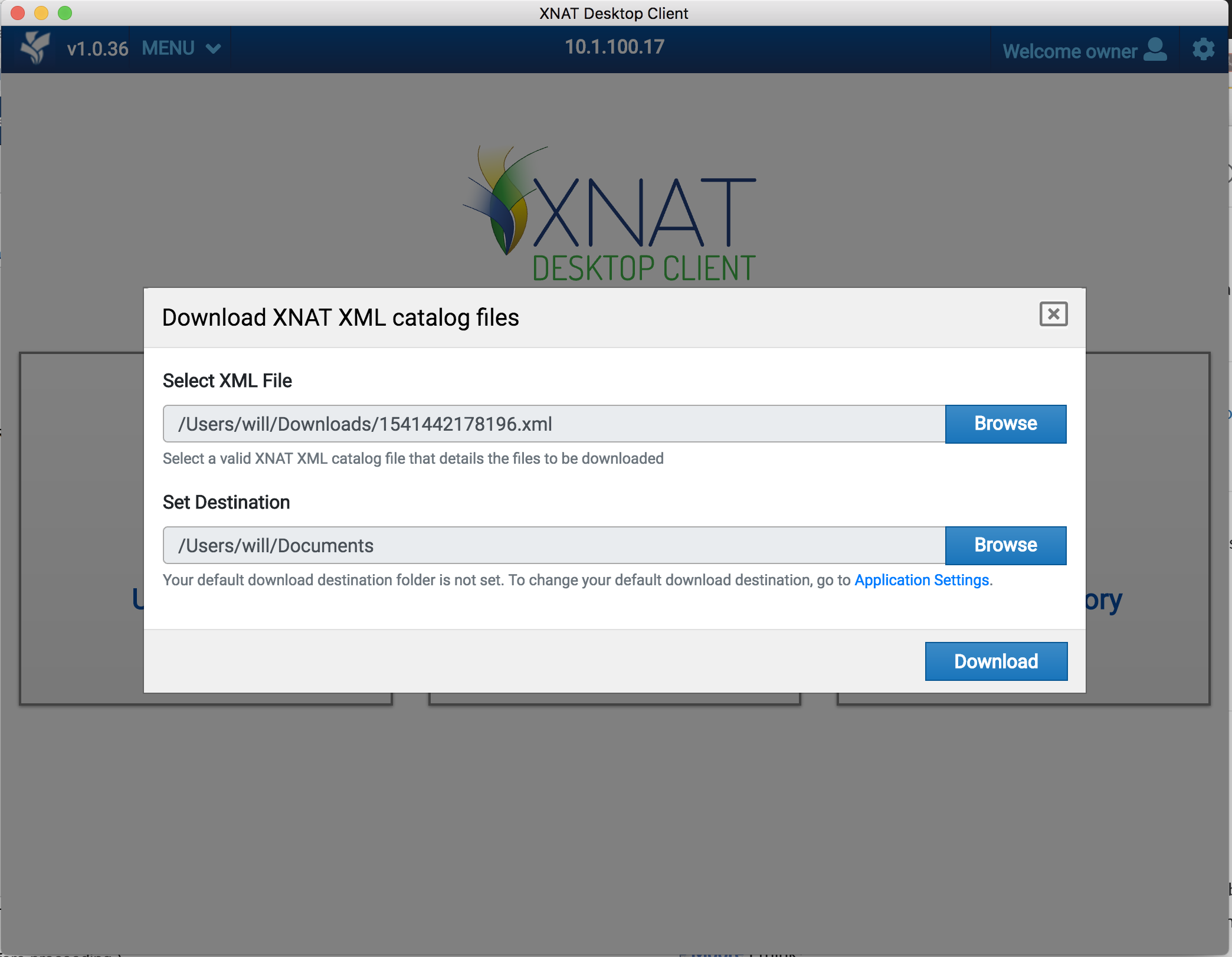Downloading Image Sessions
There are two ways you can download image sessions from XNAT using the XNAT Desktop Client.
Direct Downloads from your XNAT Webapp (requires XNAT 1.7.5)
XNAT 1.7.5 and later supports the "xnat(s)://" protocol, which the web application uses to pass a download request to the desktop application. In the new Download Images configuration page, you will see that a new download option is now available.

As long as you have the XNAT Desktop Client installed, the XNAT webapp will open automatically and log itself in using an authentication token passed from your XNAT webapp session to the desktop client.
If your XNAT Desktop Client is already open and logged in to a different XNAT, or logged in with credentials other than the ones you're using in your XNAT webapp, starting a new download may conflict with that existing session, and may interrupt any existing transfers you have going on.
Once your Desktop Client is open and logged in, you will be presented with a confirmation screen that shows the xnat:// formatted path to the catalog file that you're about to download from. You will also be prompted to set a download location. You can set a default download location in Application Settings.

It's important to note that this request with its bundled authentication token is handled as an application URL, and is not directly downloaded to your desktop. This is a security measure, so you don't have to worry about another user finding that file and opening it, thus getting access to an XNAT session on your credentials through the desktop client.
Once you click "Download", you will be taken to the Transfer Monitor screen and you can see the progress of your download as it is processed.
Start a Download from an XML Catalog File (works with XNAT 1.7.4.1)
The XNAT Desktop Client also allows you to manually initiate a download using any valid XNAT catalog file. In order to generate this catalog file, open your XNAT and select a series of images to download. In the "Imaging Data Download" configuration screen, select Option 2, Catalog XML (.xcat) as your download format.

This option will download a Catalog XML file to your computer. (Depending on your browser file-handling settings, the XML file may be displayed in a new tab. If so, save the XML file from the browser to a location of your choice before proceeding.)
Once your Desktop Client is open and logged in, select "Download Files" from the main menu screen. You will be presented with a confirmation screen that prompts you to select a catalog file that you're about to download from. You will also be prompted to set a download location. (You can set a default download location in Application Settings.)

It's important to note that this request with its bundled authentication token is handled as an application URL, and is not directly downloaded to your desktop. This is a security measure, so you don't have to worry about another user finding that file and opening it, thus getting access to an XNAT session on your credentials through the desktop client.
Once you click "Download", you will be taken to the Transfer Monitor screen and you can see the progress of your download as it is processed.
Download File Structure & Folder Location
Files will download to a new folder in your specified download location, where the folder name is the name (or IP address) of the XNAT you have logged into. All downloaded files will be placed within this folder. The organization of those files will depend on how you configured your download settings (i.e. whether you selected "Simplify download archive structure" or not).